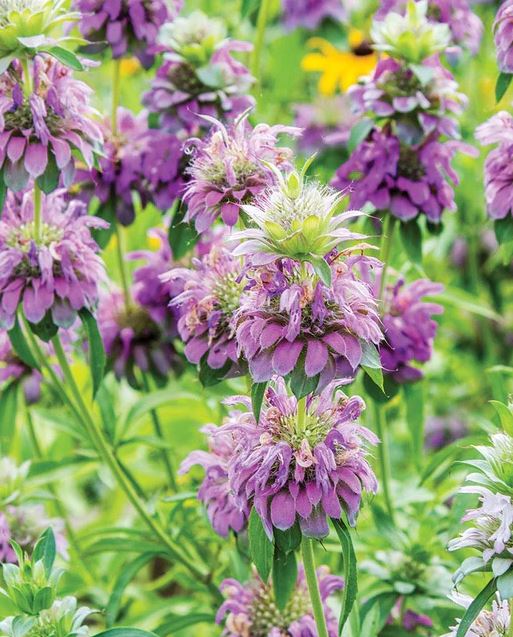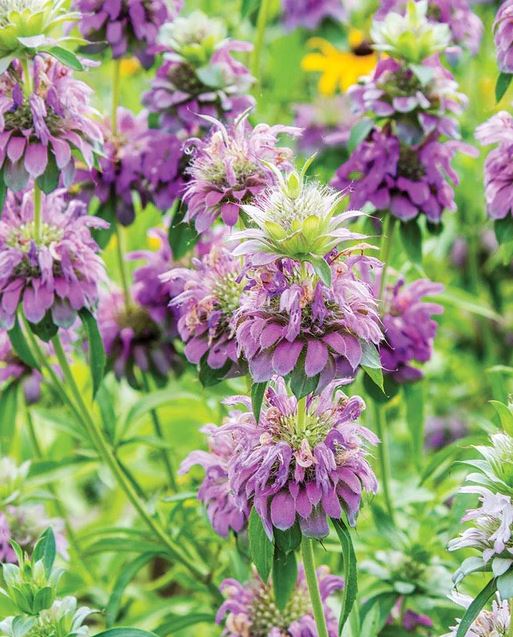Olive Seed Company
Bee Balm 'Lemon Bergamot'
Bee Balm 'Lemon Bergamot'
Couldn't load pickup availability
Lemon Bee Balm (Monarda citriodora)
This fragrant annual brings both beauty and utility to the garden with tall, upright stems stacked with tiers of lavender-pink blooms. Its citrusy, lemony scent makes it irresistible to gardeners and pollinators alike—honeybees, butterflies, and hummingbirds flock to its blossoms all summer long.
Beyond the garden, Lemon Bee Balm has a long tradition of use in herbal teas, offering a refreshing flavour with subtle lemon notes. The stems are excellent fresh in arrangements or dried for everlasting bouquets, holding their colour and form beautifully.
Pair with echinacea, cosmos, or rudbeckia for a pollinator-rich planting, or mix with ornamental grasses to highlight its airy, tiered flower form.
DETAILS:
QTY: 100
SITE: Full Sun - Part Shade
TYPE: Annual
DEPTH: Surface - A sprinkle of vermiculite over seed trays will increase humidity for good germination.
GERMINATION: 14 - 21 days at 16 - 21°C
HEIGHT: 24 - 36”
MATURITY: 100 - 115 Days
SPACING: 18 - 24”
PINCH: Yes 6 - 8"
HOW TO GROW:
Transplant (recommended): Start seeds indoors 8–10 weeks before the last frost. Sow on the surface of the soil, as light is required for germination. Mist or bottom water to avoid displacing seeds. Germination can be slow and erratic. Harden off seedlings by gradually exposing them to outdoor conditions before transplanting after the last frost.
Direct Sowing (alternative): Sow seeds directly outdoors in early spring while the soil is still cool, or in the fall. Lightly press seeds into the soil surface and keep the area consistently moist until germination.
Pinching: Pinching the tops of young plants can encourage a bushier habit. Deadheading spent flowers will prevent self-seeding and can encourage a second, smaller flush of blooms.
Soil Preference and Watering: Bee balm prefers full sun to partial shade and well-drained soil rich in organic matter. Keep the soil consistently moist, but avoid overhead watering, which can lead to powdery mildew.
Fertilizing: A single application of a balanced, all-purpose fertilizer in the spring is usually sufficient.
Harvesting: For bouquets, harvest stems when the flowers are fully open. The leaves are also edible and can be harvested for tea.
Disease: Bee balm is highly susceptible to powdery mildew, especially in humid conditions or during plant stress (including drought). To reduce risk: Keep soil evenly moist and avoid overhead watering. Space plants well for good air circulation. Remove any diseased foliage to prevent overwintering fungi. Divide plants every 3 years, replanting the healthy outer shoots and discarding old central growth.
Other Tips: Bee balm is a perennial that may spread slowly via rhizomes, forming clumps over time.
Shipping & Returns
Shipping & Returns

-
Free Shipping
Free Shipping on all orders in Canada over $125.00

